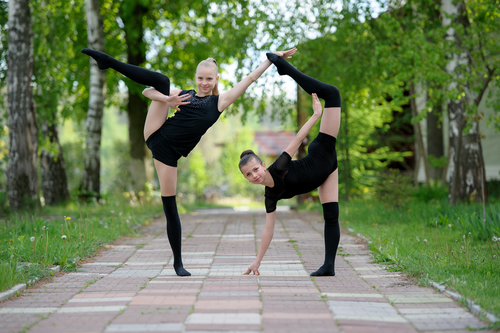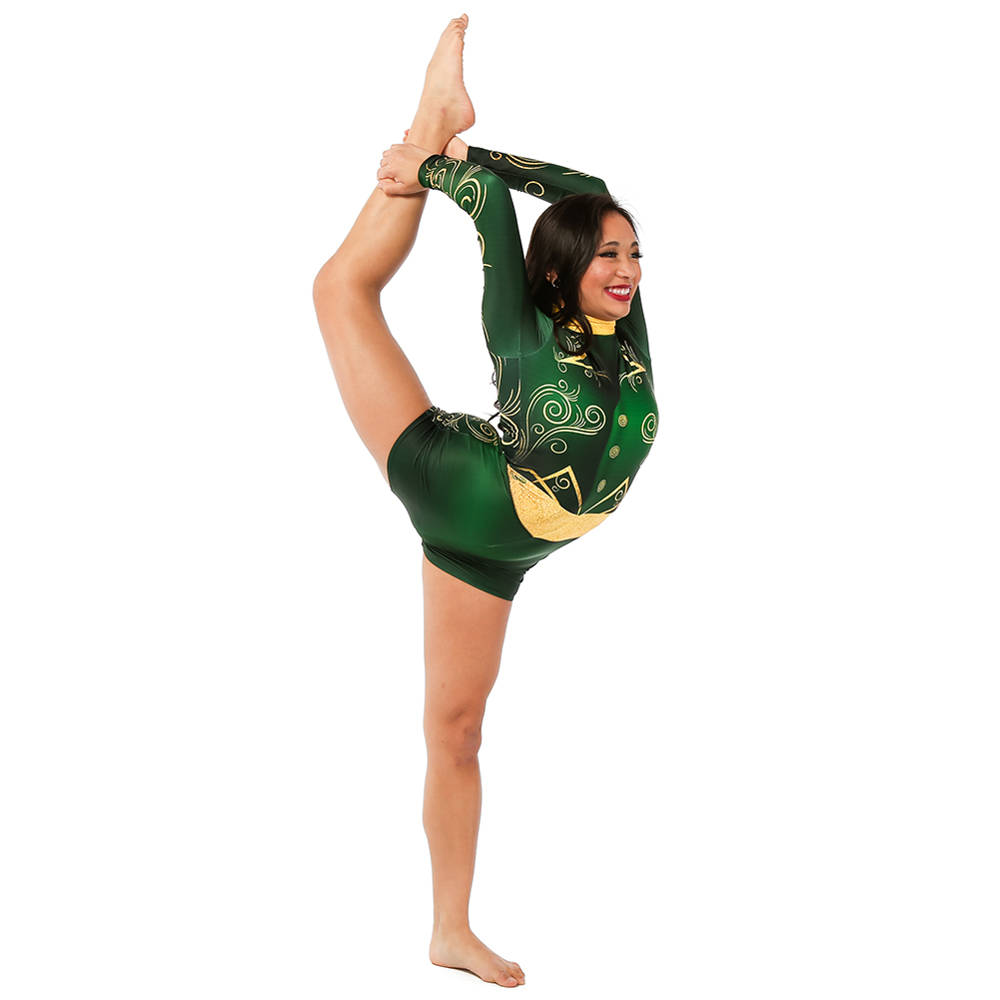Dance Talk
Our dance season never ends. Learn dance tips from the best.
How to Boost Your Flexibility


"How can I get more flexible?" It's a question every dancer has asked themselves at one time or another. Whether you're attempting your first split or trying to nail a crazy high extension in your new dance uniform, flexibility is one of the key components to being a great dancer. If you want to improve yours, it can certainly enhance your rehearsals in the studio and performances on the stage. Just make sure you take the right approach. Here are some tips to help you in the process.
Tip #1: Take your time.
There's no fast way to get more flexible. So don't look for some quick fix on the Internet that will magically elongate your dance moves. It doesn't exist and you could actually wind up hurting yourself in the process. In fact, when you try to make too much progress too fast, you're going to end up with some kind of sprain or strain in your muscles, tendons or joints.
Instead, take a gradual approach. Try to slowly and patiently improve flexibility so that your muscles have the time they need to safely adapt.
Tip #2: Warm up first.
Another vital tip to improving your flexibility involves warming up first. If you start stretching with cold muscles, you're going to wind up with an injury because your muscles aren't limber and ready to stretch in the way you want them to. Doing so can also cause muscle instability that impacts both your strength and agility.
So rather than jumping into difficult stretches or exercises to enhance flexibility, warm up first with a few minutes of cardio. This can be as simple as some jumping jacks or running in place for a couple of minutes. Then ease yourself slowly into your first stretching pose and take it from there.
Tip #3: Listen to your body.
When it comes to stretching and building flexibility, everyone's body is different. What's easy and comes naturally for one dancer -- who's more limber -- might take months of work for another. That's why it's important to listen to your body and pay attention to what works for you. Some dancers are naturally built to be more flexible, so don't compare yourself to others during the process.
When you're holding your stretches, also be careful that you don't hold them for too long. In the beginning of class, aim for holding your stretches no longer than 15 seconds. Toward the end of class, however, you can hold stretches for longer - from 60 to 90 seconds.
Tip #4: Perform dynamic stretches before class and static stretches after.
According to Dictionary.com, a dynamic stretch is "a type of sports fitness routine in which momentum and active muscular effort are used to stretch and the end position is not held."
These types of stretches -- such as shoulder rolls, torso twists, and arm swings -- are best used just after warm up, at the beginning of class. Some other good dynamic stretches for the lower body include hip circles, forward and backward lunges, and leg swings. Regardless of which you choose, dynamic stretching is ideal for the start of class because you're getting your heart rate up, while also stretching and warming up muscles.
Static stretching, on the other hand, involves holding a certain stretch for a specific period of time. This is usually best done toward the end of class, during your cool down period. You should hold these stretches for at least 30 seconds, or even up to 60 or 90 seconds -- especially if you have a particular muscle you're trying to enhance flexibility in. At the end of your dance class, your muscles will be nice and limber, so you'll be able to push them further during static stretches.
Both dynamic and static stretches are good ways for dancers to improve their flexibility. However, it's best to avoid ballistic stretching, which incorporates bouncing movements where the muscles and tendons are rapidly stretched and relaxed. This can cause strain and can even damage tendons, joints and muscles.
Tip #5: Use strength training.
If you're trying to improve your flexibility as a dancer, then add some strength training to your workout routine mix. While flexibility improves the length of your muscles, strong muscles mean you can hold your dance positions for longer.
Tip #6: Don't push too hard.
If you're having sharp or severe pain, chances are, you've taken things too far. Don't continue on or try to push through the pain. Pain is your body's way of signaling that something is wrong. Likewise, don't stretch for too long before a big performance. Doing so can actually cut down on your ability to perform your jumps properly.
At Just for Kix, we offer all styles of dance uniforms and dance wear that are both stylish, as well as comfortable and functional. From hip hop pants to crop tops and sweatshirts, we've got you covered (literally)! Shop now and check out our collections.
Here is a Video with a partner stretch that Ali made! Let us know how you like it?
Partner stretching is a great way for dancers to improve flexibility and avoid injury. In this video, the instructor emphasizes the importance of communication and proper technique when stretching with a partner.
One of the key takeaways from the video is the importance of being quiet while stretching with a partner. This is because sudden movements or loud noises can startle or injure your partner. The person being stretched is in charge and the person providing resistance should be careful not to overdo it.
Another important aspect of partner stretching is proper breathing. The instructor emphasizes the importance of taking deep breaths in through the nose and out through the mouth, and not holding your breath while stretching. This helps to relax the muscles and allows you to go further in your stretches.
The instructor also provides tips for specific stretches, such as pushing on the lower back and keeping the backs of the knees straight. She also encourages dancers to try both stretching with pointed feet and relaxing the muscles to see which allows them to go further.
Overall, partner stretching is a great way for dancers to improve flexibility and avoid injury. It is important to communicate with your partner, use proper technique and breathing, and to be mindful of your partner's safety. Happy stretching!

Follow Us
Follow Us online, join our conversations, engage with our teams around the world!